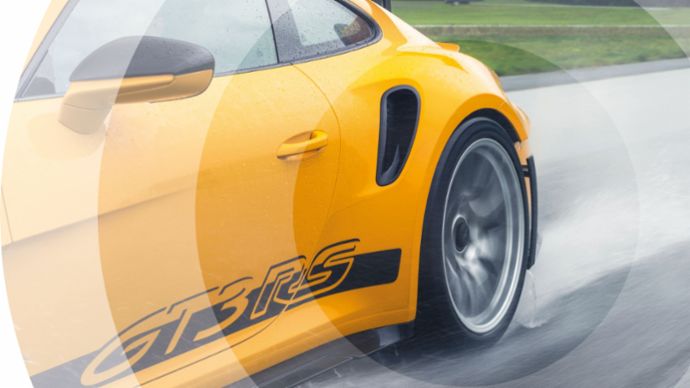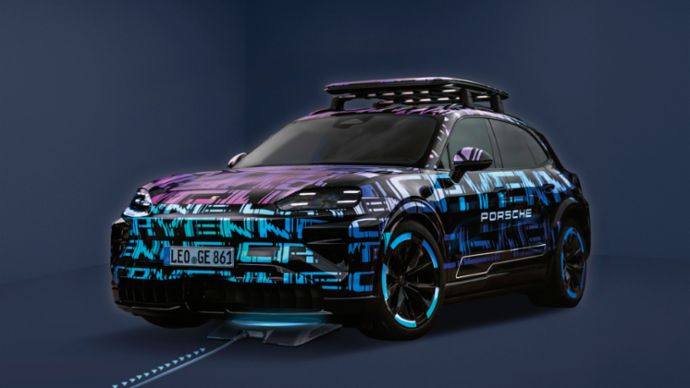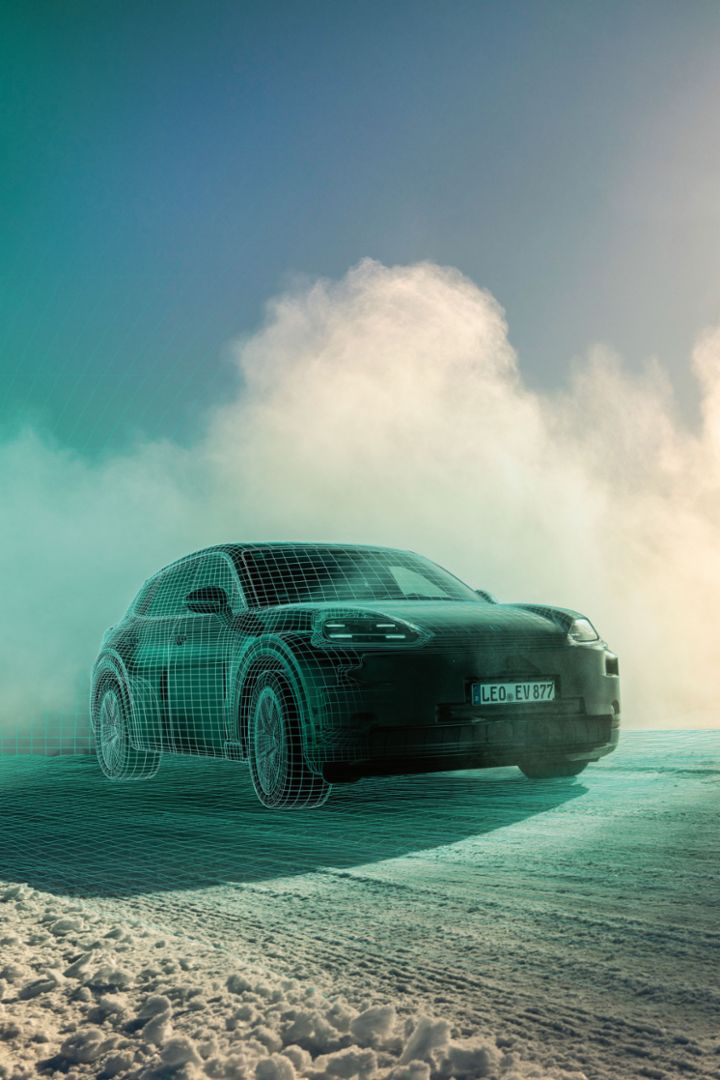Technology: How to Make eFuels Truly Sustainable
Synthetic fuels can potentially run internal combustion engines almost CO₂ neutrally – when they are produced with renewable energy.

Ideal conditions:
The wind blows almost incessantly over the barren landscape in southern Chile. This renewable energy is used in the production of synthetic fuels.From a global perspective, our planet is rich in energy thanks to the inexhaustible resources sun and wind. But that’s not necessarily the case on a local level, as regions with limited wind and sun can cover little to none of their energy requirements with these sources. In Germany, for example, wind turbines operate at full capacity just 66 days out of the year on average. According to Bundesnetzagentur, they supplied 25.9 percent of the electricity consumed in 2022. In electric vehicles, a portion of this renewable energy plays a key role in the life cycle assessment of mobility. But there are currently around 1.3 billion existing vehicles with internal combustion engines worldwide that will remain on the road for many years to come. Eco-friendly operation will require other solutions such as so-called eFuels, which are synthetic fuels produced in a virtually carbon-neutral manner. Porsche is doing its part, with a new production facility in South America.

Ready to go:
During the pilot phase, the Haru Oni production facility in Punta Arenas, Chile, will produce around 130,000 liters of eFuel annually.Pilot project in Patagonia
Punta Arenas has a population of around 130,000 and is located in the Patagonia region at the southern tip of Chile, making it the southernmost large city in the world. It’s also the most important center of trade on the western coast of the Strait of Magellan. This area is known for its strong winds, which blow incessantly across the barren landscape, almost always from the same direction. They’re so powerful that they can transform trees into bizarre sculptures, which are referred to as “flag trees.” Wind turbines could operate at maximum capacity 270 days a year here, and yet the region does not use wind power. Porsche is eager to tap this resource with international partners and has a share of 11.6 percent in Chilean company Highly Innovative Fuels (HIF). The aim is to use the wind power there to manufacture synthetic fuels. Inaugurated in December 2022, the production facility near Punta Arenas is called Haru Oni, which in the local dialect means “land of winds.” The production schedule for the current pilot phase is 130,000 liters of eFuel annually.
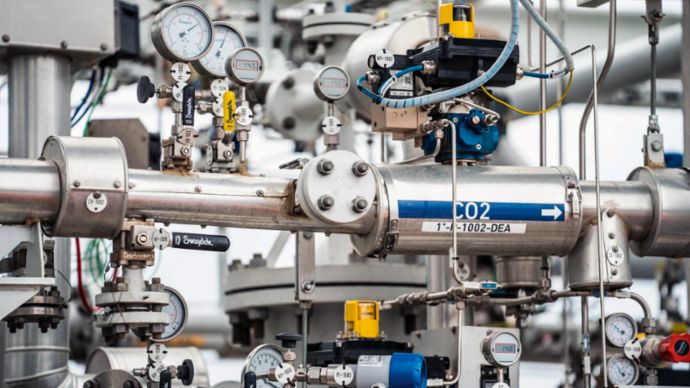
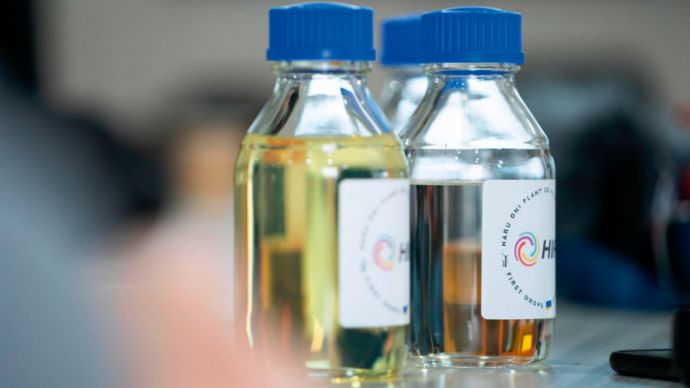
Circuit:
During the manufacturing process, carbon dioxide (CO₂) is filtered directly out of the ambient air. The finished fuel consists of nothing other than CO₂ and water and, like other fuels, can be accessed at a gas pump.
Fuel from air and water
The first step in manufacturing eFuels – electrolysis for hydrogen production – requires a great deal of energy, which is what makes the perpetual availability of green electricity so important. Water (H₂O) is a very stable chemical compound. Two hydrogen atoms (H) bond with an oxygen atom (O) to form a water molecule. It takes a great deal of energy to extract hydrogen from this compound. Because the Patagonian wind offers inexhaustible energy, hydrogen can be generated there more sustainably and affordably. In regions with limited energy, any electricity produced has to be used directly for the greatest benefit.
In addition to hydrogen, eFuel production requires a second component, carbon dioxide (CO₂), which is a greenhouse gas that at high concentrations in the atmosphere promotes global warming. CO₂ can be filtered from the air using direct air capture, a process by which air flows through a ceramic filter similar to a catalytic converter in a car. However, rather than precious metals, the flow channels use a chemical substance to bind CO₂ molecules. Once all of the spaces are filled with CO₂, the filter is closed, vacuumed, and heated. Heat releases the CO₂, which can then be vacuumed into a tank. In concrete terms, one liter of eFuel requires hydrogen from three liters of desalinated seawater and CO₂ from 6,000 cubic meters of air.
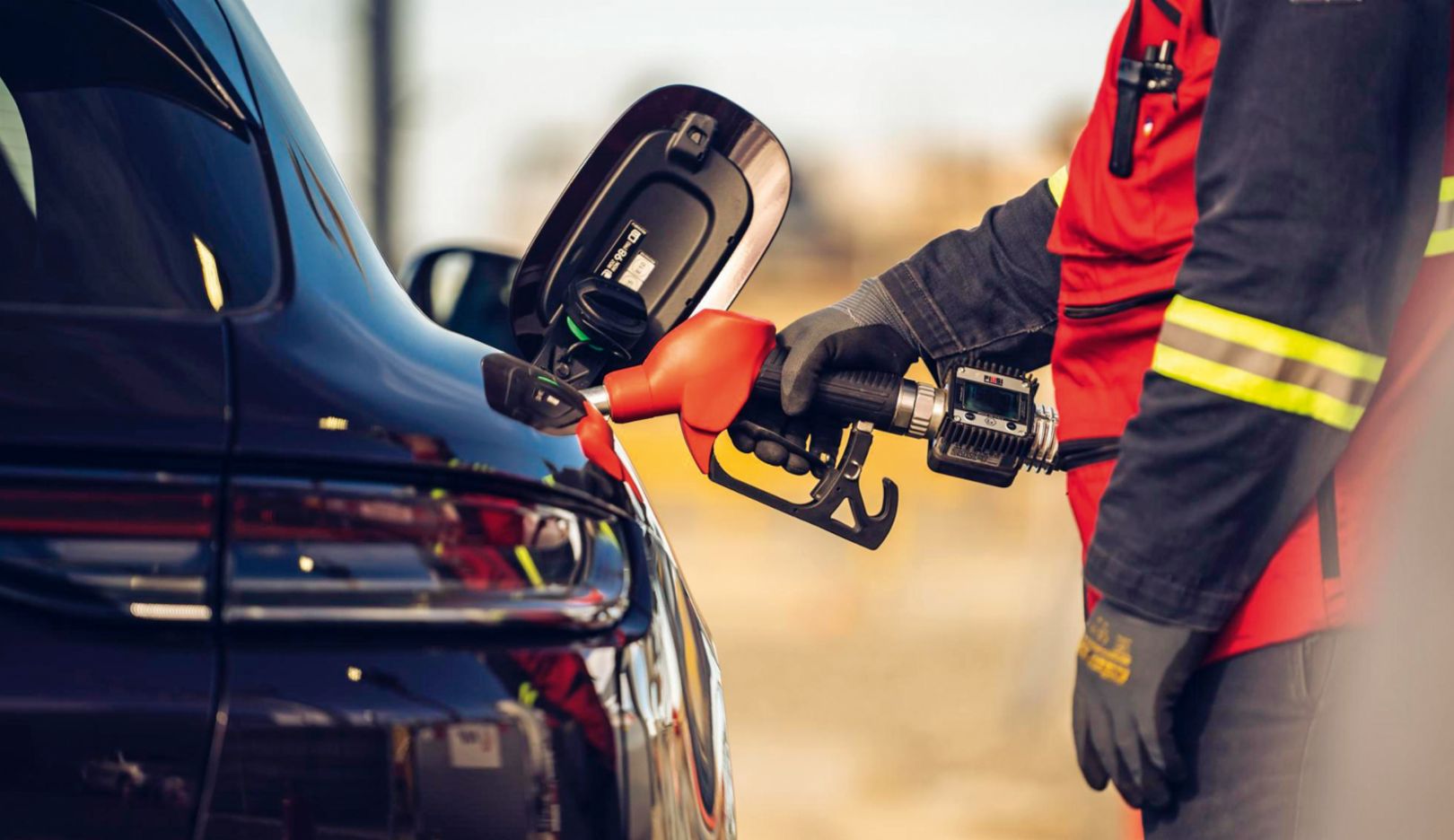
Preparation and use of eFuels
A synthesis plant then binds the hydrogen and CO₂ to create methanol, which is age resistant and suitable for storage and transportation. Ship engines are currently designed for operation with methanol. However, use in passenger cars requires further processing, with additional carbon compounds added in the final step of synthesis, methanol to gasoline. The end product is a gasoline and diesel alternative as well as eFuel for mixing with conventional, mineral oil–based fuels for ongoing reduction of emissions.
The vision
Production in Punta Arenas should reach 550 million liters of eFuel annually by the end of this decade.
The fuel produced in Chile therefore consists of nothing other than air and water and can be sold at gas stations around the world. It’s also worth noting that all internal combustion engines can be operated with eFuel, from classic cars to high-performance race cars. Once availability reaches a certain level, combustion will release no more CO₂ than what was extracted from the ambient air during the production process, which would close the circuit. Annual production in Punta Arenas should reach 55 million liters of eFuel by the middle of the decade and 550 million liters two years later – and will continue to grow. That’s equivalent to 1.2 percent of Germany’s fuel requirements for passenger cars. A new beginning with high potential.



